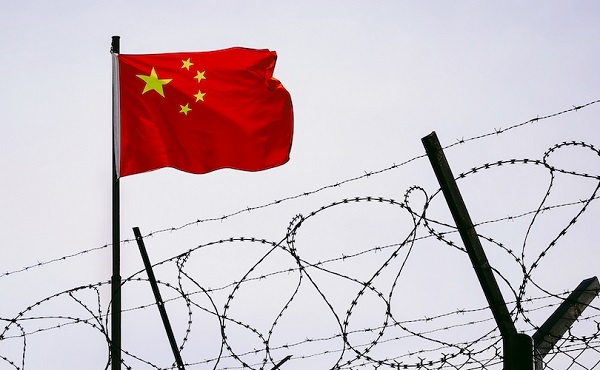Business
We need our own ‘DOGE’ in 2025 to unleash Canadian economy

From the Fraser Institute
Canada has a regulation problem. Our economy is over-regulated and the regulatory load is growing. To reverse this trend, we need a deregulation agenda that will cut unnecessary red tape and government bloat, to free up the Canadian economy.
According to the latest “Red Tape” report from the Canadian Federation of Independent Business, government regulations cost Canadian businesses a staggering $38.8 billion in 2020. Together, businesses spent 731 million hours on regulatory compliance—that’s equal to nearly 375,000 fulltime jobs. Canada’s smallest businesses bear a disproportionately high burden of the cost, paying up to five times more for regulatory compliance per-employee than larger businesses. The smallest businesses pay $7,023 per employee annually to comply with government regulation while larger businesses pay $1,237 per employee.
Of course, the Trudeau government has enacted a vast swath of new regulations on large sectors of Canada’s economy—particularly the energy sector—in a quest to make Canada a “net-zero” greenhouse gas (GHG) emitter by 2050 (which means either eliminating fossil fuel generation or offsetting emissions with activities such as planting trees).
For example, the government (via Bill C-69) introduced subjective criteria—including the “gender implications” of projects—into the evaluation process of energy projects. It established EV mandates requiring all new cars be electric vehicles by 2035. And the costs of the government’s new “Clean Electricity Regulations,” to purportedly reduce the use of fossil fuels in generating electricity, remain unknown, although provinces (including Alberta) that rely more on fossil fuels to generate electricity will surely be hardest hit.
Meanwhile in the United States, Donald Trump plans to put Elon Musk and Vivek Ramaswamy in charge of the new Department of Government Efficiency (DOGE), which will act as a presidential advisory commission (not an official government department) for the second Trump administration.
“A drastic reduction in federal regulations provides sound industrial logic for mass head-count reductions across the federal bureaucracy,” the two wrote recently in the Wall Street Journal. “DOGE intends to work with embedded appointees in agencies to identify the minimum number of employees required at an agency for it to perform its constitutionally permissible and statutorily mandated functions. The number of federal employees to cut should be at least proportionate to the number of federal regulations that are nullified: Not only are fewer employees required to enforce fewer regulations, but the agency would produce fewer regulations once its scope of authority is properly limited.”
If Musk and Ramaswamy achieve these goals, the U.S. could leap far ahead of Canada in terms of regulatory efficiency, making Canada’s economy even less competitive than it is today.
That would be bad news for Canadians who are already falling behind. Between 2000 and 2023, Canada’s GDP per person (an indicator of incomes and living standards) lagged far behind the average among G7 countries. Business investment is also lagging. Between 2014 and 2021, business investment per worker (inflation-adjusted, excluding residential construction) in Canada decreased by $3,676 (to $14,687) while it increased by $3,418 (to $26,751) per worker in the U.S. And over-regulation is partly to blame.
For 2025, Canada needs a deregulatory agenda similar to DOGE that will allow Canadian workers and businesses to recover and thrive. And we know it can be done. During a deregulatory effort in British Columbia, which included a minister of deregulation appointed by the provincial government in 2001, there was a 37 per cent reduction in regulatory requirements in the province by 2004. The federal government should learn from B.C.’s success at slashing red tape, and reduce the burden of regulation across the entire Canadian economy.
Business
Some Of The Wackiest Things Featured In Rand Paul’s New Report Alleging $1,639,135,969,608 In Gov’t Waste


From the Daily Caller News Foundation
Republican Kentucky Sen. Rand Paul released the latest edition of his annual “Festivus” report Tuesday detailing over $1 trillion in alleged wasteful spending in the U.S. government throughout 2025.
The newly released report found an estimated $1,639,135,969,608 total in government waste over the past year. Paul, a prominent fiscal hawk who serves as the chairman of the Senate Homeland Security and Governmental Affairs Committee, said in a statement that “no matter how much taxpayer money Washington burns through, politicians can’t help but demand more.”
“Fiscal responsibility may not be the most crowded road, but it’s one I’ve walked year after year — and this holiday season will be no different,” Paul continued. “So, before we get to the Feats of Strength, it’s time for my Airing of (Spending) Grievances.”
Dear Readers:
As a nonprofit, we are dependent on the generosity of our readers.
Please consider making a small donation of any amount here.
Thank you!
The 2025 “Festivus” report highlighted a spate of instances of wasteful spending from the federal government, including the Department of Health and Human Services (HHS) spent $1.5 million on an “innovative multilevel strategy” to reduce drug use in “Latinx” communities through celebrity influencer campaigns, and also dished out $1.9 million on a “hybrid mobile phone family intervention” aiming to reduce childhood obesity among Latino families living in Los Angeles County.
The report also mentions that HHS spent more than $40 million on influencers to promote getting vaccinated against COVID-19 for racial and ethnic minority groups.
The State Department doled out $244,252 to Stand for Peace in Islamabad to produce a television cartoon series that teaches children in Pakistan how to combat climate change and also spent $1.5 million to promote American films, television shows and video games abroad, according to the report.
The Department of Veterans Affairs (VA) spent more than $1,079,360 teaching teenage ferrets to binge drink alcohol this year, according to Paul’s report.
The report found that the National Science Foundation (NSF) shelled out $497,200 on a “Video Game Challenge” for kids. The NSF and other federal agencies also paid $14,643,280 to make monkeys play a video game in the style of the “Price Is Right,” the report states.
Paul’s 2024 “Festivus” report similarly featured several instances of wasteful federal government spending, such as a Las Vegas pickleball complex and a cabaret show on ice.
The Trump administration has been attempting to uproot wasteful government spending and reduce the federal workforce this year. The administration’s cuts have shrunk the federal workforce to the smallest level in more than a decade, according to recent economic data.
Festivus is a humorous holiday observed annually on Dec. 23, dating back to a popular 1997 episode of the sitcom “Seinfeld.” Observance of the holiday notably includes an “airing of grievances,” per the “Seinfeld” episode of its origin.
Alberta
A Christmas wish list for health-care reform

From the Fraser Institute
By Nadeem Esmail and Mackenzie Moir
It’s an exciting time in Canadian health-care policy. But even the slew of new reforms in Alberta only go part of the way to using all the policy tools employed by high performing universal health-care systems.
For 2026, for the sake of Canadian patients, let’s hope Alberta stays the path on changes to how hospitals are paid and allowing some private purchases of health care, and that other provinces start to catch up.
While Alberta’s new reforms were welcome news this year, it’s clear Canada’s health-care system continued to struggle. Canadians were reminded by our annual comparison of health care systems that they pay for one of the developed world’s most expensive universal health-care systems, yet have some of the fewest physicians and hospital beds, while waiting in some of the longest queues.
And speaking of queues, wait times across Canada for non-emergency care reached the second-highest level ever measured at 28.6 weeks from general practitioner referral to actual treatment. That’s more than triple the wait of the early 1990s despite decades of government promises and spending commitments. Other work found that at least 23,746 patients died while waiting for care, and nearly 1.3 million Canadians left our overcrowded emergency rooms without being treated.
At least one province has shown a genuine willingness to do something about these problems.
The Smith government in Alberta announced early in the year that it would move towards paying hospitals per-patient treated as opposed to a fixed annual budget, a policy approach that Quebec has been working on for years. Albertans will also soon be able purchase, at least in a limited way, some diagnostic and surgical services for themselves, which is again already possible in Quebec. Alberta has also gone a step further by allowing physicians to work in both public and private settings.
While controversial in Canada, these approaches simply mirror what is being done in all of the developed world’s top-performing universal health-care systems. Australia, the Netherlands, Germany and Switzerland all pay their hospitals per patient treated, and allow patients the opportunity to purchase care privately if they wish. They all also have better and faster universally accessible health care than Canada’s provinces provide, while spending a little more (Switzerland) or less (Australia, Germany, the Netherlands) than we do.
While these reforms are clearly a step in the right direction, there’s more to be done.
Even if we include Alberta’s reforms, these countries still do some very important things differently.
Critically, all of these countries expect patients to pay a small amount for their universally accessible services. The reasoning is straightforward: we all spend our own money more carefully than we spend someone else’s, and patients will make more informed decisions about when and where it’s best to access the health-care system when they have to pay a little out of pocket.
The evidence around this policy is clear—with appropriate safeguards to protect the very ill and exemptions for lower-income and other vulnerable populations, the demand for outpatient healthcare services falls, reducing delays and freeing up resources for others.
Charging patients even small amounts for care would of course violate the Canada Health Act, but it would also emulate the approach of 100 per cent of the developed world’s top-performing health-care systems. In this case, violating outdated federal policy means better universal health care for Canadians.
These top-performing countries also see the private sector and innovative entrepreneurs as partners in delivering universal health care. A relationship that is far different from the limited individual contracts some provinces have with private clinics and surgical centres to provide care in Canada. In these other countries, even full-service hospitals are operated by private providers. Importantly, partnering with innovative private providers, even hospitals, to deliver universal health care does not violate the Canada Health Act.
So, while Alberta has made strides this past year moving towards the well-established higher performance policy approach followed elsewhere, the Smith government remains at least a couple steps short of truly adopting a more Australian or European approach for health care. And other provinces have yet to even get to where Alberta will soon be.
Let’s hope in 2026 that Alberta keeps moving towards a truly world class universal health-care experience for patients, and that the other provinces catch up.
-

 International1 day ago
International1 day agoGeorgia county admits illegally certifying 315k ballots in 2020 presidential election
-

 Digital ID2 days ago
Digital ID2 days agoCanadian government launches trial version of digital ID for certain licenses, permits
-

 International1 day ago
International1 day agoCommunist China arrests hundreds of Christians just days before Christmas
-

 Business2 days ago
Business2 days agoThe “Disruptor-in-Chief” places Canada in the crosshairs
-

 Alberta1 day ago
Alberta1 day agoCalgary’s new city council votes to ban foreign flags at government buildings
-

 Business16 hours ago
Business16 hours agoSome Of The Wackiest Things Featured In Rand Paul’s New Report Alleging $1,639,135,969,608 In Gov’t Waste
-

 Business1 day ago
Business1 day agoWarning Canada: China’s Economic Miracle Was Built on Mass Displacement
-

 Alberta1 day ago
Alberta1 day agoWhat are the odds of a pipeline through the American Pacific Northwest





